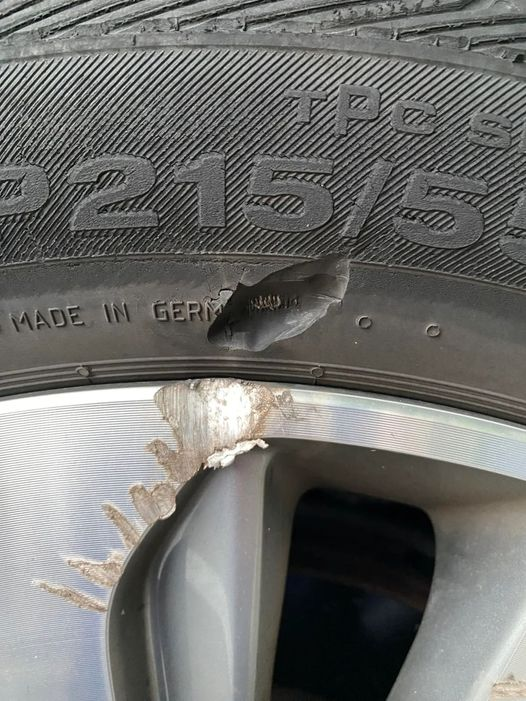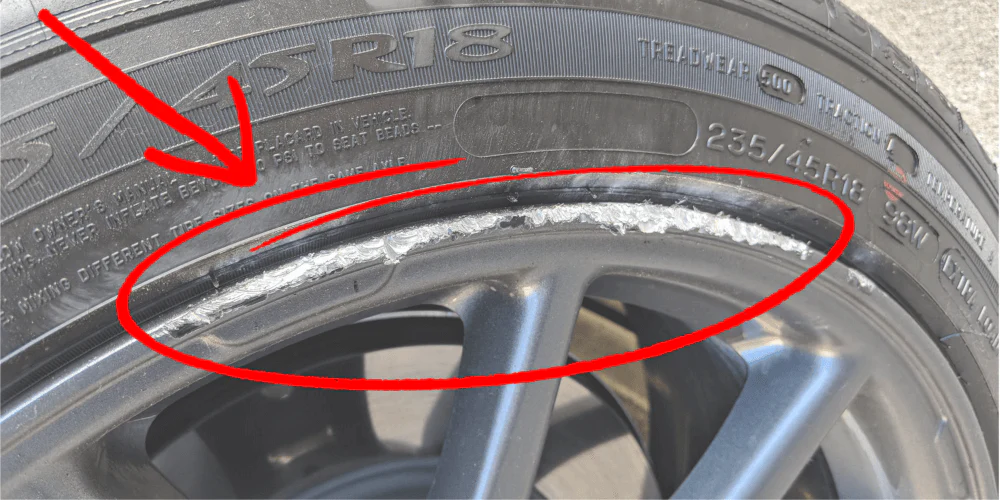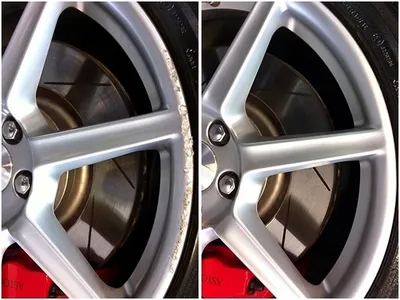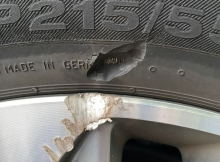Spotting damage on your girlfriend’s car can be a bit of a shock—especially when it’s on the tire or rim. You may find a nasty cut on the tire’s sidewall or scratches on the rim, commonly referred to as curb rash. What does this mean? Should you be concerned, and can it be fixed? In this article, we’ll explore what these damages are, why they occur, and what you should do about them to keep the car safe and running smoothly.

Understanding Sidewall Damage: A Serious Safety Concern
When it comes to tires, the sidewall is one of the most vulnerable parts. Unlike the tread, which is built to handle regular wear and tear, the sidewall is thinner and more prone to cuts, punctures, and even cracking.
What Causes Sidewall Damage?
Sidewall cuts usually occur when the tire comes into contact with sharp edges like curbs, metal debris, or rough pothole edges. Underinflated tires can also be at fault, as they flex more while driving, increasing the likelihood of damage.
Why It’s Dangerous
Sidewall damage is more than just a cosmetic issue—it’s a serious safety concern. Unlike the tread area, the sidewall cannot be patched or repaired effectively, as it bears most of the tire’s pressure and flexing. Driving with a damaged sidewall increases the risk of a blowout, especially at high speeds, which can be extremely hazardous.
If you spot a significant cut on the sidewall, the best course of action is to replace the tire as soon as possible.
What’s Causing the Curb Rash on the Rim?
Curb rash is a common issue for many drivers, often appearing as scratches or abrasions on the rim. It usually occurs when the car scrapes against the curb during parking or while making tight turns.
Why Rims Get Damaged
The rim gets damaged when the tire’s sidewall makes hard contact with curbs or other rough surfaces. This happens when drivers park too close to curbs or misjudge tight turns, especially on narrow streets.
Is Curb Rash a Major Issue?
While curb rash doesn’t pose an immediate safety risk like sidewall damage, it can lead to other problems over time. Deep scratches on the rim can weaken the wheel’s structure and affect the tire’s ability to maintain a proper seal, which may result in slow air leaks.
If the damage is only cosmetic, it can often be repaired by a professional. However, if the scratches are severe, it might be necessary to replace the rim altogether.
Immediate Steps to Take When You Spot Damage
If you notice any damage to the tire or rim, don’t panic. Here are the steps you should follow:
1. Inspect the Tire Thoroughly
Examine the sidewall damage closely. If the cut is deep enough to reveal the internal structure, stop driving the car immediately. In this case, it’s best to call for a tow to safely transport the vehicle to a tire shop.

2. Check Tire Pressure
Sidewall cuts can cause rapid pressure loss. Use a tire pressure gauge to see if the tire is still holding air. If the pressure is low, try to inflate the tire temporarily and drive slowly to the nearest service center.
3. Examine the Rim’s Condition
Look closely at the rim. If there are deep scratches or bends, get a professional evaluation. While minor scratches can be repaired, severe damage may require rim replacement.
Why You Should Replace a Tire with Sidewall Damage
When sidewall damage is detected, it’s critical to replace the tire. Here’s why you can’t afford to ignore it:
No Reliable Repairs
Sidewalls aren’t designed to be patched or plugged like the tread area. Patching the sidewall is unsafe because of the high stress this part of the tire endures.
High Risk of Blowouts
A weakened sidewall increases the likelihood of a blowout, which can occur unexpectedly and be catastrophic at high speeds.
Immediate Replacement Required
To maintain safety, replace the tire as soon as sidewall damage is found. Continuing to drive on a compromised tire puts everyone in the car at risk.
Fixing Curb Rash: Should You Repair or Replace the Rim?
Curb rash on rims is primarily a cosmetic issue, but it can be repaired if it affects the car’s appearance or performance.

DIY Repair Kits
For minor curb rash, there are DIY kits that come with sandpaper, filler, and paint to restore the rim’s appearance. While these kits are helpful for surface-level scratches, they won’t fix deeper gouges.
Professional Rim Repair
If the damage is more severe, a professional repair service can restore the rim using techniques like sanding, buffing, and repainting.
When to Replace the Rim
If the rim is bent or cracked, replacement is necessary. Driving on a damaged rim can lead to vibrations, poor handling, and even affect the new tire’s longevity.
Could the Damage Suggest a Bigger Problem?
While tire and rim damage can happen to anyone, it could be a sign of a bigger underlying issue.
Driving Habits
If similar damage has occurred before, consider discussing driving habits with your girlfriend. Repeated sidewall cuts and curb rash could indicate a tendency to drive too close to curbs or take tight turns too quickly.
Alignment and Suspension Issues
Frequent tire damage may also suggest issues with wheel alignment or suspension. It’s worth getting the car checked to rule out these potential problems.
Parking Situations
Regularly parking in tight spaces or along busy streets increases the risk of sidewall and rim damage. Being more mindful of parking choices can help prevent future issues.
Conclusion: Address Damage Quickly and Drive Safely
Spotting sidewall cuts or curb rash can be alarming, but taking immediate action is essential for safety. While sidewall damage requires tire replacement, curb rash can often be repaired, depending on the extent of the damage. Be proactive by addressing these issues quickly, discussing driving habits, and considering better parking locations to prevent similar damage in the future.
Ensuring tire and rim safety can lead to a safer and more enjoyable driving experience. Don’t let small damages turn into bigger problems—stay on top of car maintenance and drive safely!

